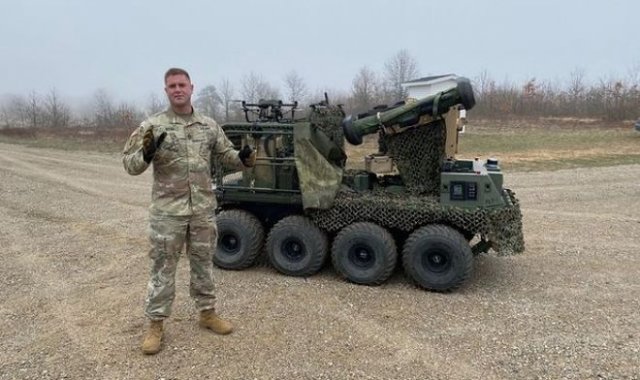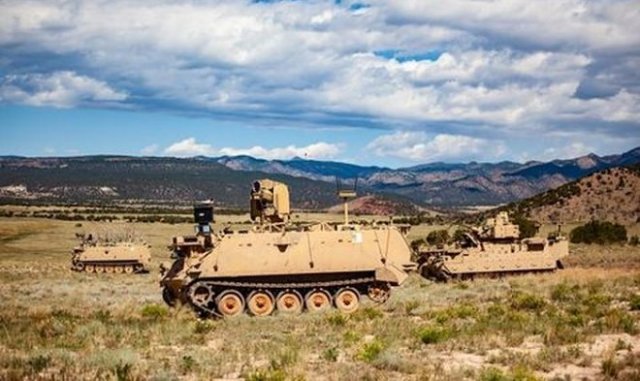
Combat Robot
The Pentagon reported that by 2030, units of combat robots resembling the "Ghost Army" of the Second World War, commanded by General George Patton, will be formed in the American army. The "ghost Army" consisted of fake equipment and soldiers disguised as foreign troops and was intended to mislead the enemy.
Robotic combat vehicles currently under development will eventually be entrusted with front-line reconnaissance, participation in battles with the same robots, live soldiers, and even with enemy armored units. Thus, a light robotic combat vehicle (RCV-L) will help infantry and engineering units by delivering ammunition and heavy weapons, and a larger one – RCV-H – will act together with tank units and infantry fighting vehicles.

Combat Robot
In April of this year, the RCV-L prototype, equipped with a remotely controlled Javelin strike system (CROWS-J) and an anti-tank missile launcher with a range of about 2.5 km, was tested at the training center Camp Grayling (USA). Another Textron robotic vehicle-Ripsaw with a 30-mm XM813 Bushmaster automatic cannon-will most likely be used in conjunction with units of the Stryker Army brigade operating on wheeled armored vehicles. The largest RCV-H robotic vehicle will be reliably protected from machine-gun fire and shrapnel. It will be equipped with an automatic cannon and heavier JAGM air-to-ground anti-tank missiles. It will act together with any units of the ground forces, including tank units. The introduction of combat robots will allow the US army to minimize losses in manpower in the future in the event of conflicts.
